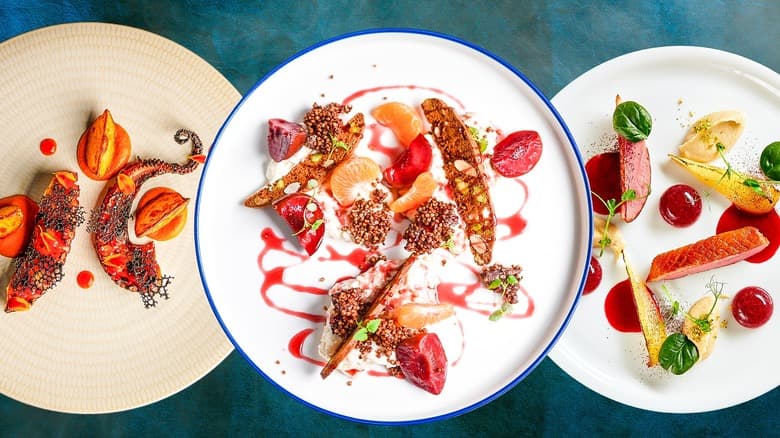Molecular gastronomy and unexpected flavor combinations are not just trends but a true revolution in the world of cuisine. In recent decades, these innovations have fundamentally changed the approach to food preparation, offering not only new taste sensations but also a completely new way of perceiving food. In this article, we explore how molecular gastronomy is transforming traditional cooking and how unexpected flavor pairings open up new horizons in gastronomic experience.
Molecular Gastronomy: What is it?
Molecular gastronomy is a field of culinary art that combines cooking with scientific principles, including chemistry and physics. This approach seeks to understand how changes in the physical and chemical properties of ingredients affect their taste, texture, and appearance. For example, using liquid nitrogen can create incredibly light and crispy textures, or agar-agar can be used to create jelly that holds its shape even in the most unusual conditions.
One of the prominent figures in molecular gastronomy is the famous Spanish chef Ferran Adrià, who pioneered the use of unconventional technologies in the kitchen. He applies scientific methods to create new textures and flavor combinations that were previously thought to be impossible.
Unexpected Flavor Combinations: How Does It Work?
Unexpected flavor combinations are another element actively used in molecular gastronomy. These combinations break traditional notions of what should pair with what. For example, sweet with salty or sour with bitter combinations can be not only surprising but also incredibly delicious. The question of how these flavors interact is studied not only in terms of recipes but also through the lens of chemical and biological reactions.
One of the most well-known examples of unusual pairings is caramel popcorn with sea salt. Traditionally, sweet and salty flavors are kept separate in cooking, but molecular gastronomers have managed to create a balance between these opposites, making such dishes a real discovery for food lovers.
Another example is chocolate with chili pepper. The idea of such a combination may seem strange, but the molecular processes that occur when these ingredients are mixed reveal entirely new taste nuances, making the food more complex and deep.
How Molecular Gastronomy Changes Our Perception of Food
Molecular gastronomy not only changes how we cook but also how we perceive food itself. One of the most striking examples is the so-called “foam” cuisine, where dishes are presented in completely new forms. For instance, instead of a traditional soup, you can try a soup in the form of foam, which has a light and airy texture but retains all the familiar taste notes.
Additionally, molecular gastronomy allows us to change not only the texture and taste but also the visual perception of food. The aesthetics of a dish become just as important as its taste. The technique of “spherification,” where a liquid is transformed into small spheres resembling caviar, has brought an element of artistry into cooking, captivating and amazing the imagination.
The Future of Molecular Gastronomy: What Awaits Us?
Molecular gastronomy technologies continue to develop, and the future promises even more exciting innovations. Given the rapid progress in science, we can expect the emergence of new food processing methods that will allow for the creation of dishes that currently seem fantastic. For example, scientists are already working on making food that will change depending on the individual’s preferences, adapting its taste and texture to personal choices.
Moreover, we can expect a deeper integration of molecular gastronomy into home kitchens. Today, many modern gadgets and devices, such as specialized gel devices or liquid nitrogen, are becoming available to home cooks. In the future, we may be able to prepare such unusual dishes as foamy soups, fruit “caviar,” or chocolate products with unpredictable flavors right in our own kitchens.
Conclusion
Molecular gastronomy and unexpected flavor combinations are not just fashionable trends but a true revolution in the world of cuisine. They offer a chance to look at food from a new perspective, opening new horizons for those willing to experiment and seek out unusual flavors. And who knows, perhaps in the future we will enjoy new culinary masterpieces created using the most advanced technologies, making our perception of food even more vibrant and multifaceted.
